Catching the train to Lyon proved stressful for Kerry. We missed our scheduled train at Interlaken Oust but caught the next one half an hour later. There was a train change at Berne and we arrived there in time to catch our original connecting train but due to the short changeover time we found ourselves in an overcrowded 2nd class cabin and no way to move through to first class. Distressing but not the end of the world. We were unable to sit together, and our luggage sat unattended in the entrance/exit of the carriage. The journey proved uneventful apart from the heavy odour of hot bodies in a tin can.
There was some relief when we arrived at Gare de Lyon Par Dieu opposite a huge Westfield shopping centre – just like home – and even greater relief when we found our hotel Best Western Richelieu nearby. The area around the train station is undergoing some significant renovation and navigating our way the first time was testing. The hotel is in an old building converted to this purpose which made me worry that we maybe dragging our luggage upstairs. Fortunately, it has an elevator. Now don’t feel too relieved. These old buildings may have an elevator, but it is retro fitted so many compromises are often made to make them fit. I can recall an old-style hand operated elevator in Paris fitted into the opening of the staircase barely fitting 2 people, the elevator in Vienna styled like a closet and barely fitting 2 people and this elevator styled on a sardine tin fitting only 2 people facing one another. Still better than dragging the luggage upstairs.
The hotel room is tiny but with modern fittings. It had a kettle and a desk in addition to the usual, so it felt luxurious. We had some ideas about what we wanted to do but needed to gain an understanding of the transport system to do it. We located the Tourist Information Centre on our phone and via the magic of the Google maps made our way there on foot – some hour long walk – to Bellcour Square.
Lyon is on two rivers – the Saone and the Rhone and we had crossed the Rhone to get to Bellcour Square. The pictures below show the river and some of the major buildings on its banks. Passing through the street toward the square we came upon a protest the purpose of which was unclear, but they had everyone’s attention.


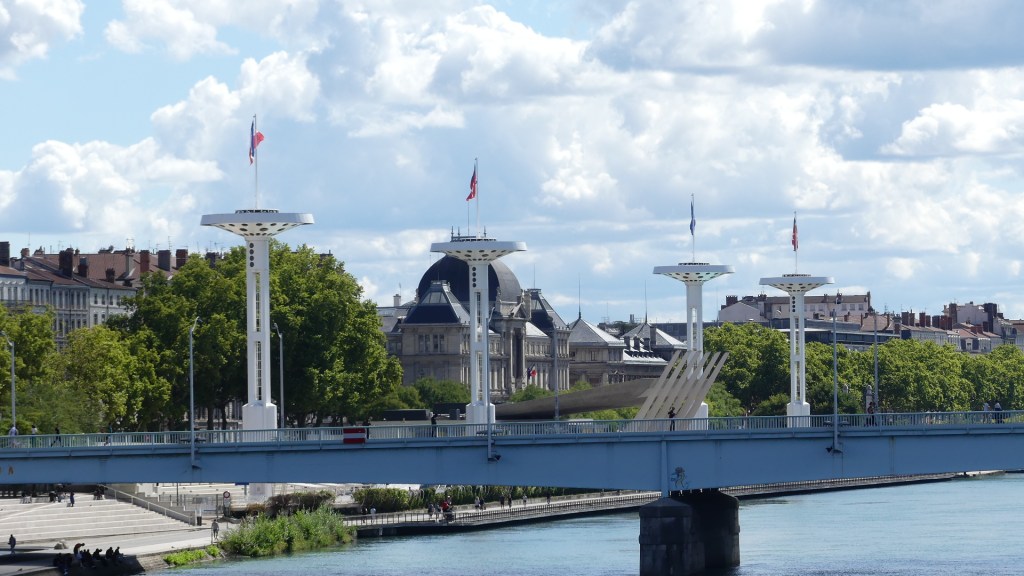

As we entered Bellcour square 3 things stood out – the Information Centre, the underground station and the Basilica on the hill. Having obtained the information needed we decided we would visit the Basilica that afternoon. The Basilica appears below.

We had been told that we could access the Basilica via a funicular at the next underground station across the Saone in the old city. So, we purchased the day pass for €6 euros each travelled across the river or I should say under the river then exited at the 1st station to find right next door a funicular. Kerry had a little trouble with her ticket and entry into the funicular causing a minor issue with an underground official and a helpful local. Once solved we noticed two cars, one with a long queue and the other rather shorter. It seemed that the car with the shorter queue was leaving later and we chose that car. It proved to be the wrong choice. The car we had chosen took us to the Roman ruins and St Just a suburb of Lyon not the church. We returned to the Roman ruins and walked around and up the hill to see rather extensive ruins of foundations and a sign directing us to The Basilica of Notre-Dame de Fourvière.
Thinking we had stumbled onto the right path we dragged ourselves up some steep hills in very hot afternoon heat until arriving at the back of the Basilica. As we started to explore, we came across a delightful little bar with views of the city and the Basilica and an empty table with our names on it. The pictures below show the Basilica, firstly from the bar the panorama from the bar, then a tour around the exterior and a carousel designed as a Xmas tree with the large pine nut carriages at the bottom. From there I visited the interior of the Basilica starting with the crypt which appeared to be for the living rather than the dead. I had left Kerry at the Bar to finish her large G & T.









The Basilica was built with private funds between 1872 and 1896 in a dominant position overlooking the city. The site it occupies was once the Roman forum of Trajan. We felt we had completed enough for today so we headed to our hotel using our new found knowledge of the underground system only to be frustrated by a line closure. Where we were to change underground line D for line B, Line B was closed and a kind official walked us out of the subway to the nearby bus stop showing us that a bus had been substituted. We travelled to Gare de Par Dieux and walked home.
We wanted to walk through the old city, and I wanted to see the “Traboules” – passageways between houses and between streets behind doors appearing to be the entrance to homes. We knew line B remained closed so we sought out the bus to travel to Sax Gambetta but missed the stop. Realising we had missed our stop occurred about 3/4 the way to the end of the line and we ended up travelling to the end of the line not knowing what we were going to do. We got off the bus and with an exchange of hand signs with the bus driver started off in the direction of the return bus stop. Not knowing any better had we stayed on the bus the next stop was the terminus and the bus would then return to Lyon Gare de Par Dieu. So, we tracked down the bus station as best we could (about 1/2 hour) and got the return bus to Sax Gambetta then the underground line D and the old town. The following photos show Lyon Cathedral. The cathedral is dedicated to Saint John the Baptist, and is the seat of the Archbishop of Lyon. Begun in 1180 on the ruins of a 6th-century church, it was completed in 1476. Beside the cathedral are the ruins of either an earlier church a Roman ruin or an extension which has been destroyed. We followed a map given to us by the Tourist Office to locate the Traboules and the photos show the Palais des Justice, the oldest street in Lyon, timber facades on 15th century houses in a lane off that street, scenes of the old city and our hunt for the Traboules.






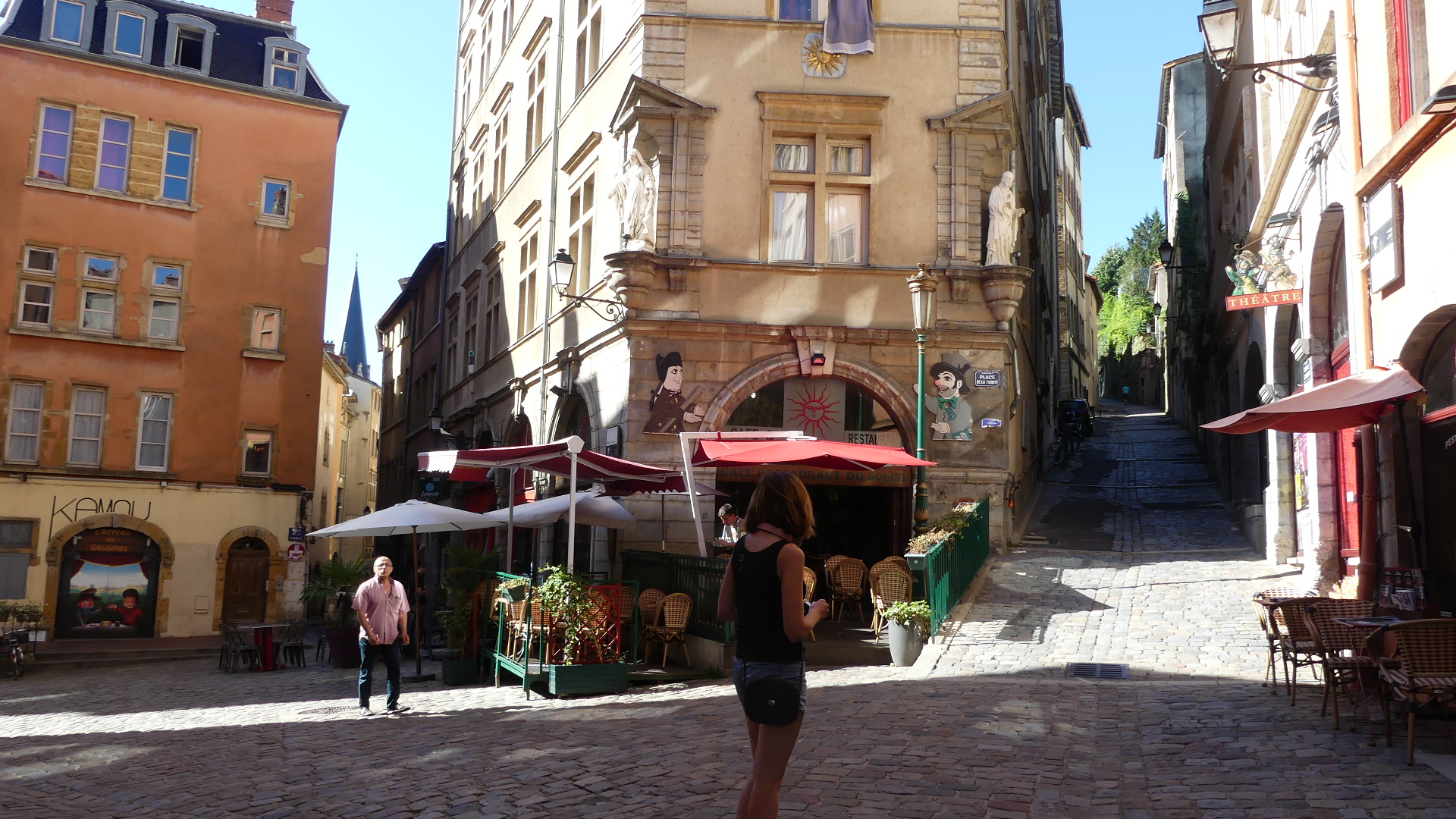
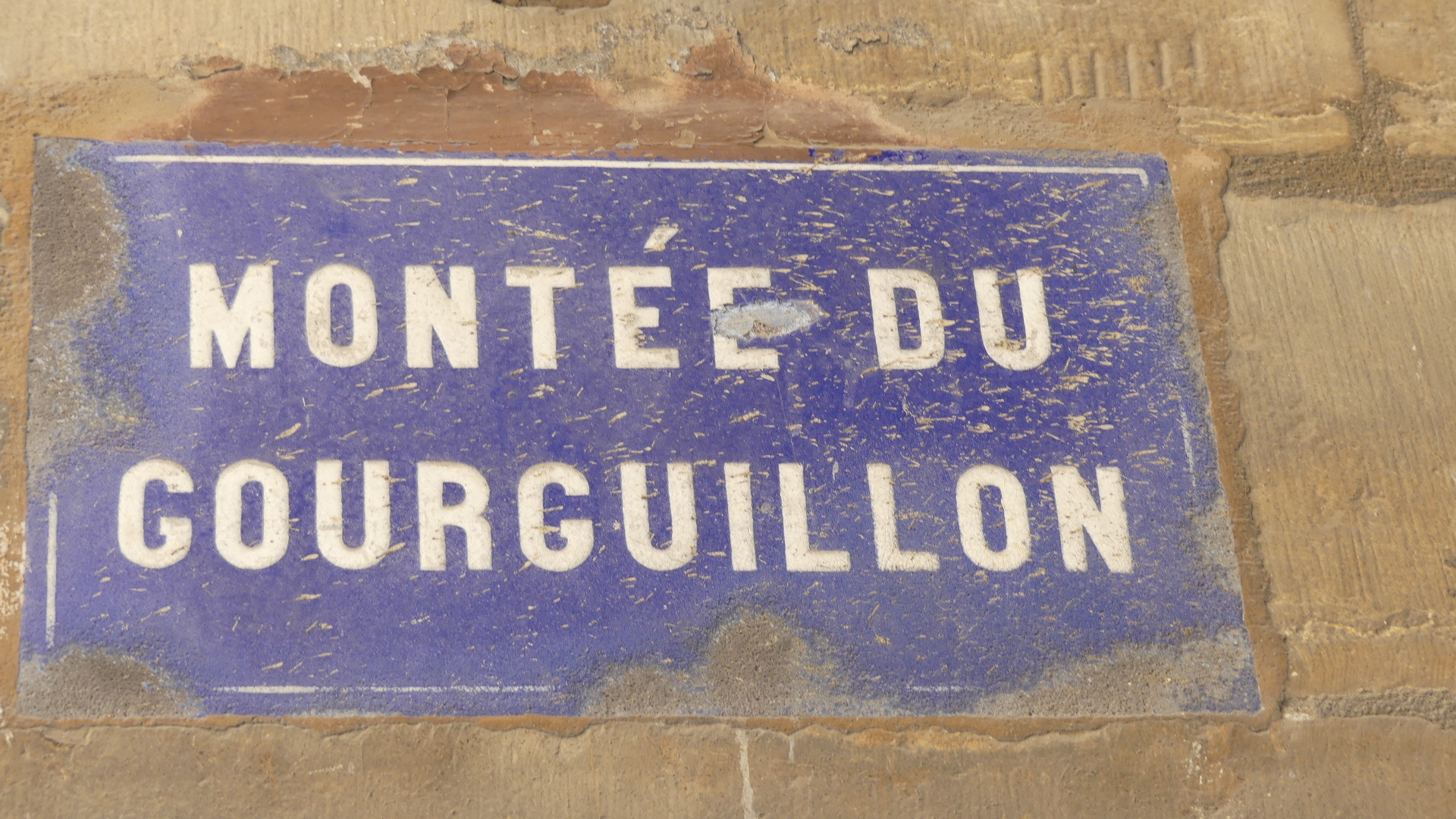

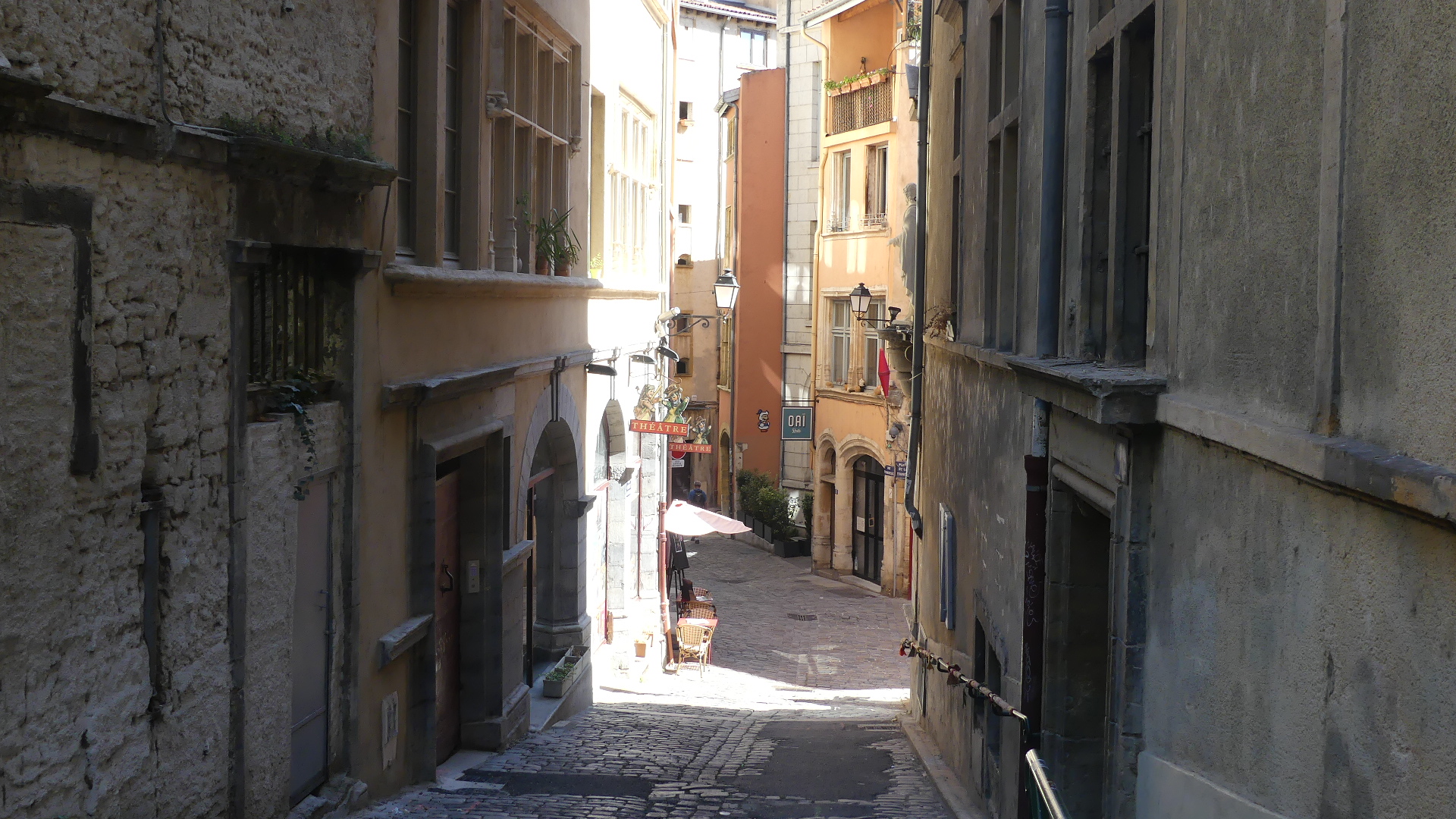
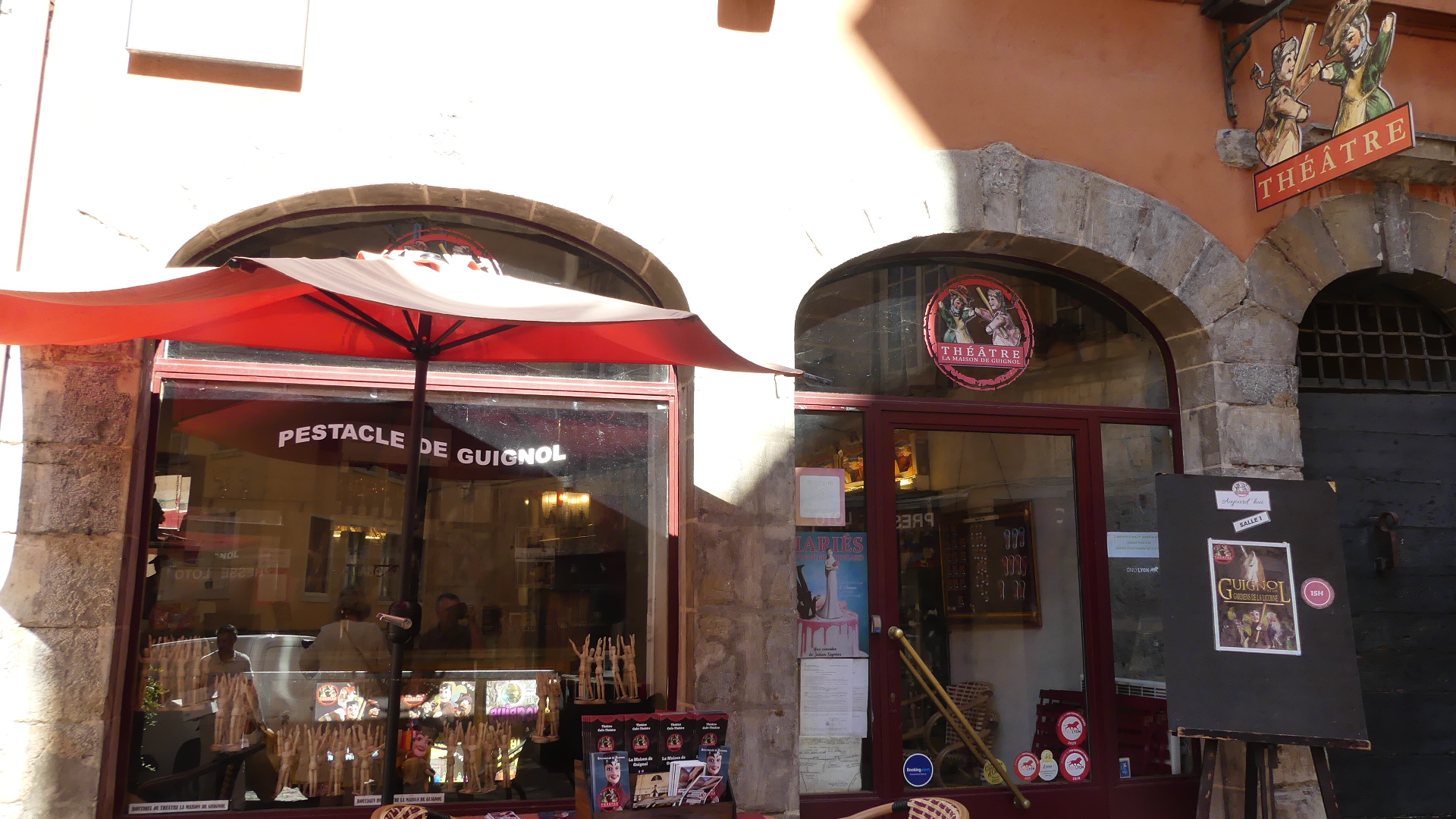
We finally cracked it and found our first Traboule and inside some old doors and about 3 courtyards on different levels all giving access to residences formerly the homes of weavers. We were now looking up at the timber facades in the alley behind which we had visited a short time ago. We then found about another 4 or 5 traboules which the public can access. One lead to the back of a functioning cafe and some had elevators installed for the residents. One had been converted into a hidden magic shop. We found Soleil’s House and it’s history and had coffee at Soleil’s House. Returning via the cathedral we past a mime different from others in that on making a donation he did a routine thereby changing his position.
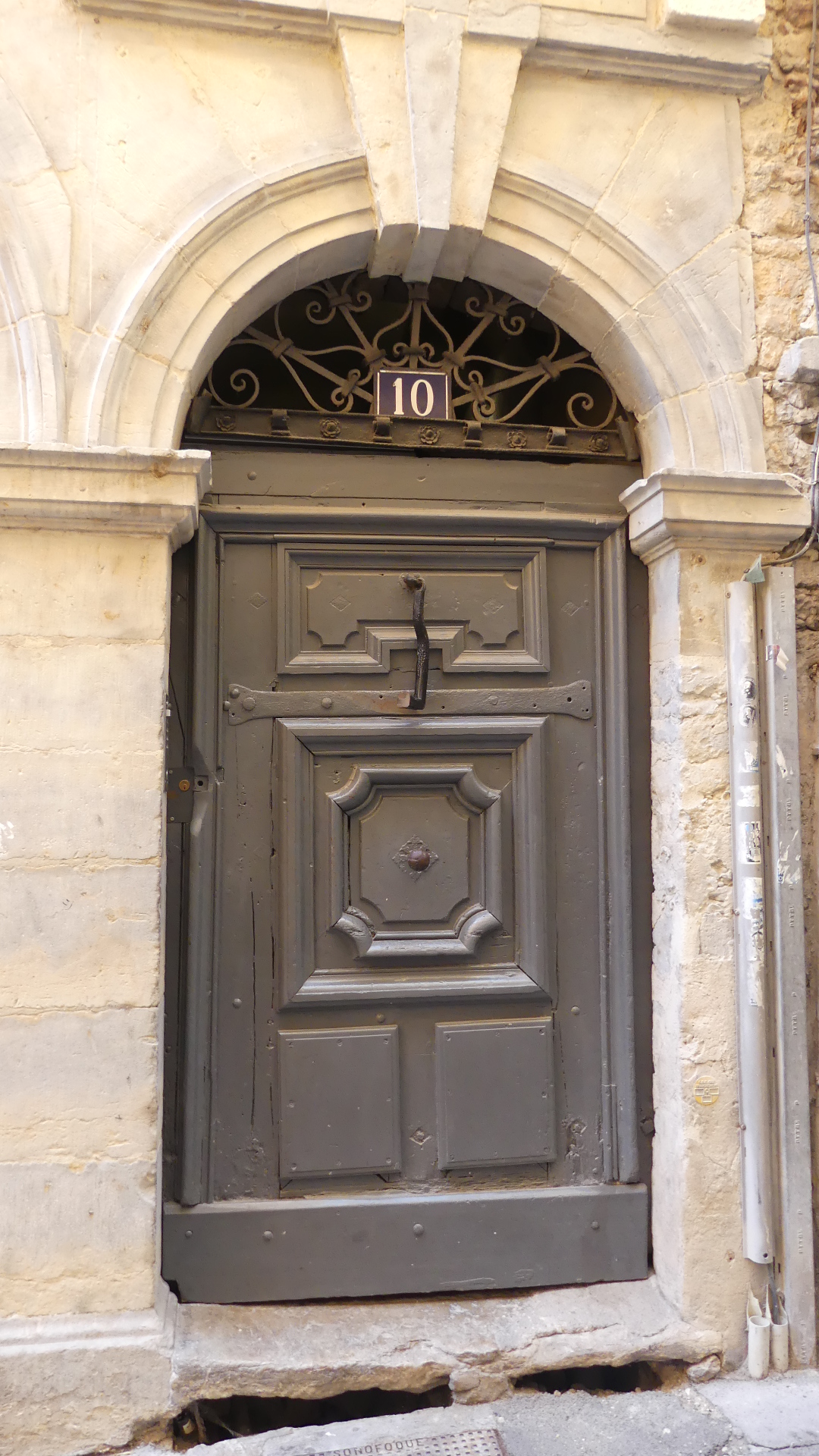


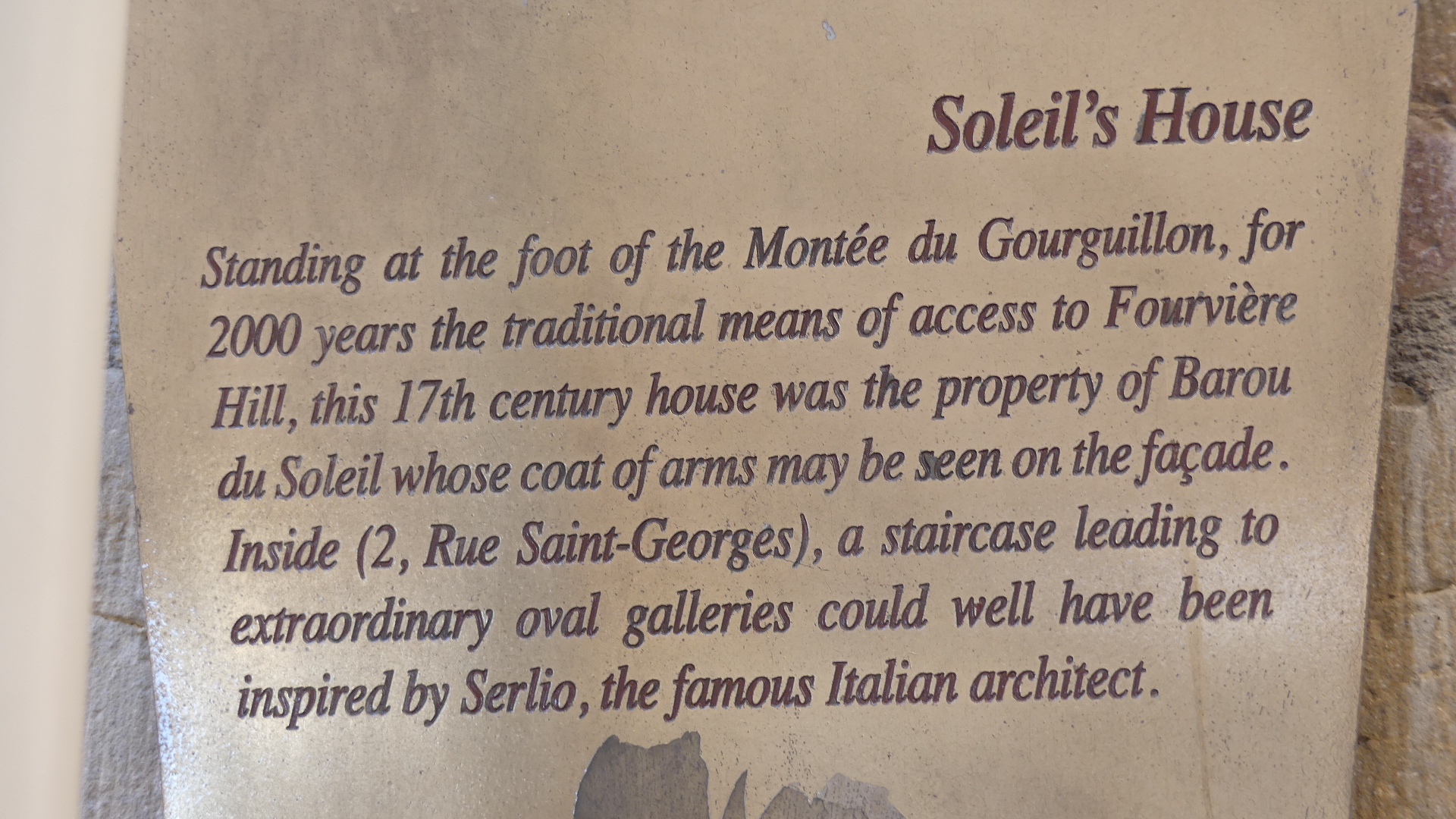




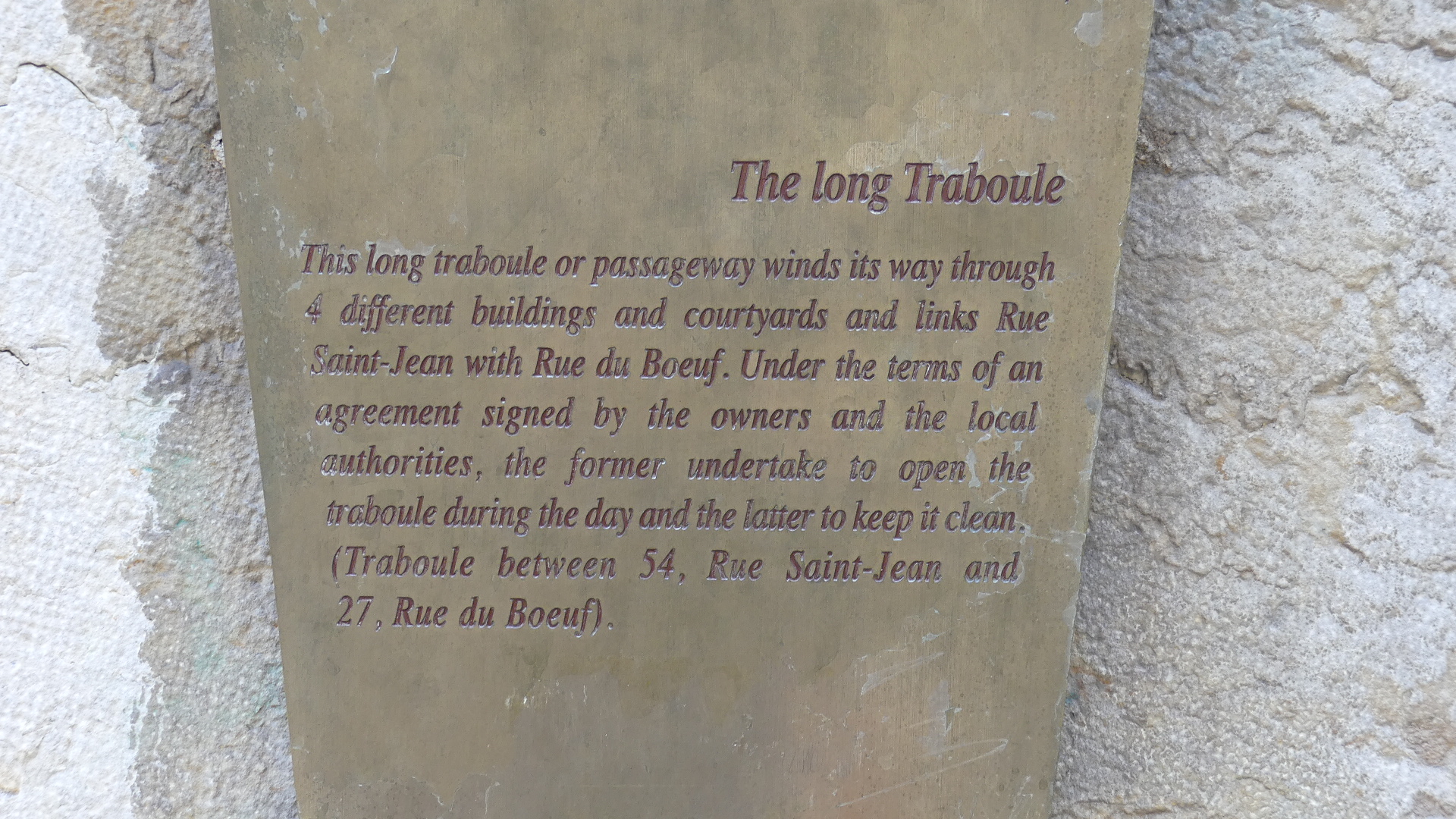
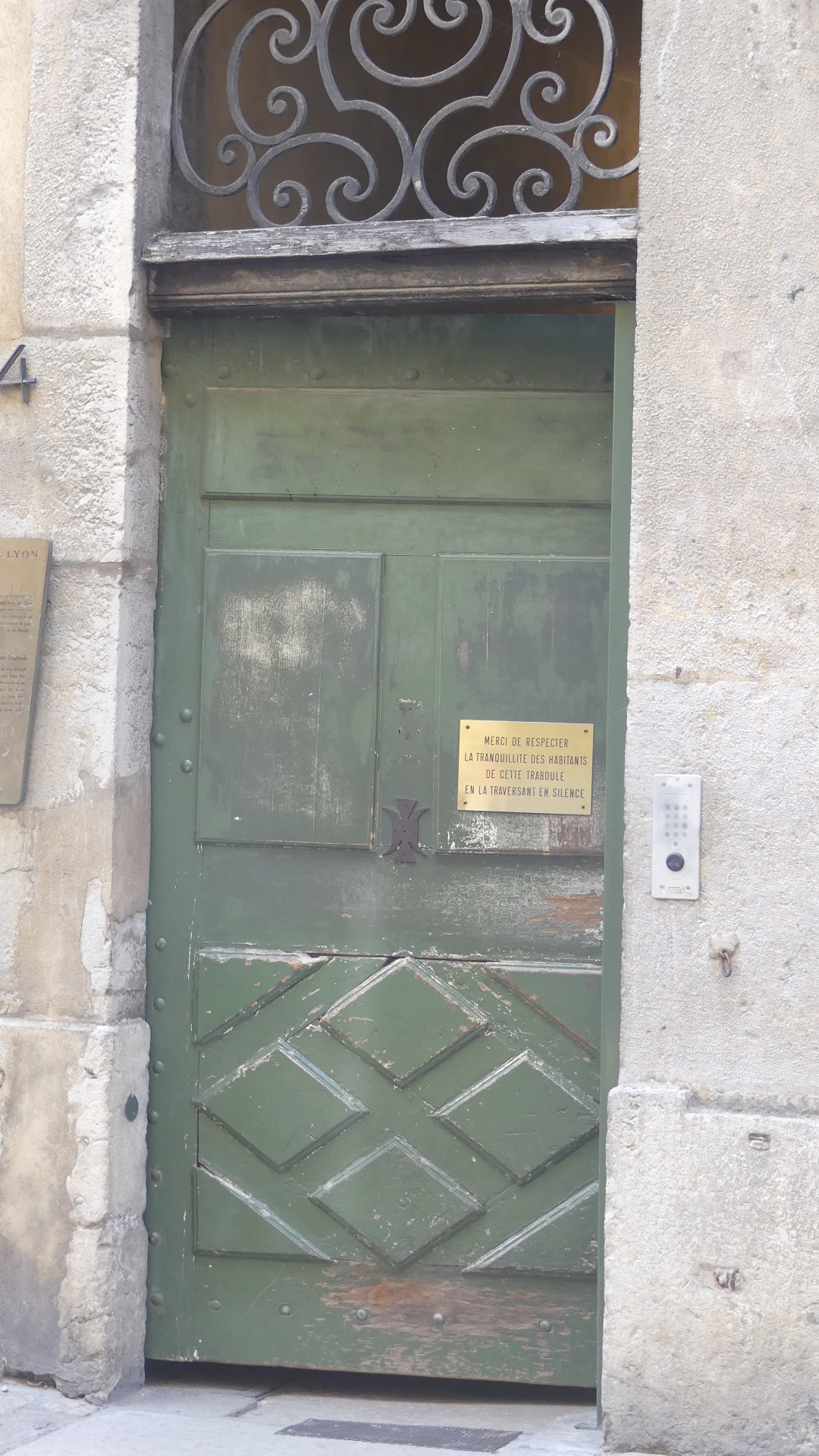




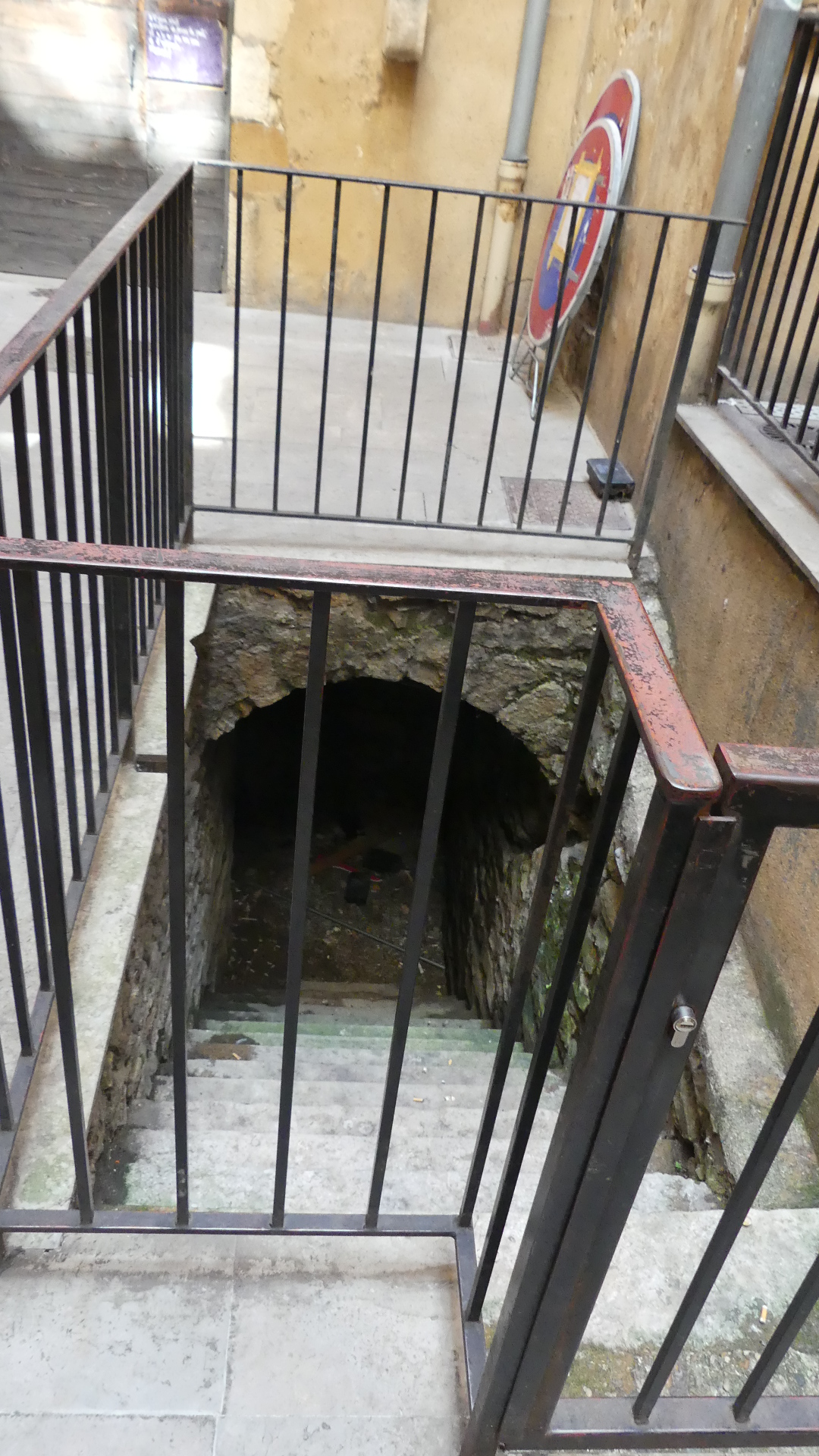
On our final full day, we decided to visit the country and visit a medieval village called “Perouge”. Told we could catch a bus to it for €2 euro each and a journey of 20 mins, we thought this would make a nice change. It was a challenge again to find the right bus at the right bus stop, but we did it but then after 20 mins travel, no sign of Perouge and a driver who did not speak English panic started to creep in. I was able to inform the driver we were a little worried and he reassured me that it was still some distance away. 1 hour 10 mins later we were dropped off in the new Perouges with the old town 1.5 klms away. Putting on our walking shoes we headed off arriving shortly after 10.00am at the Lower Gate. Following are photos of our first sights after getting off the bus and sights of old medieval Perouge.
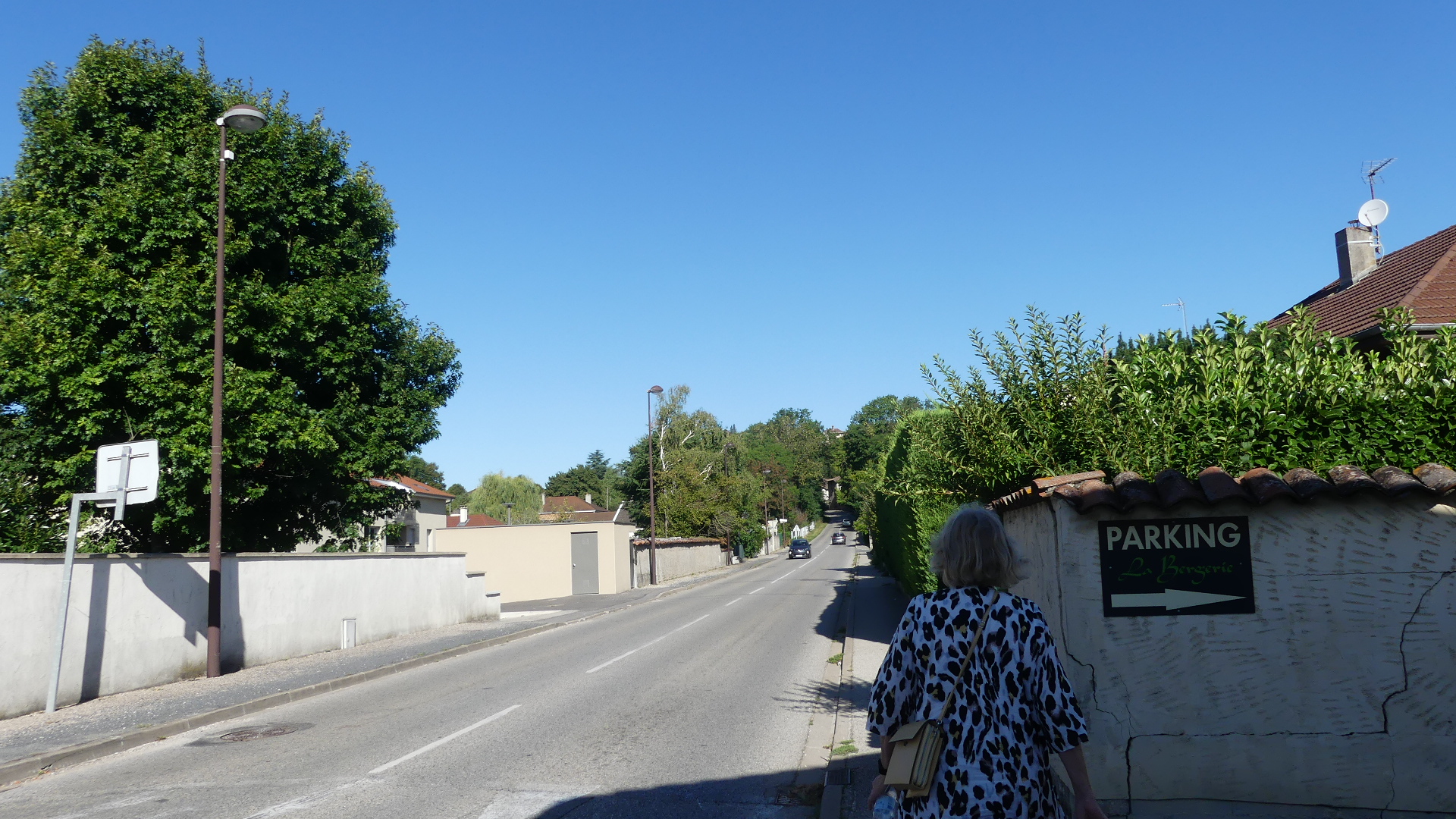



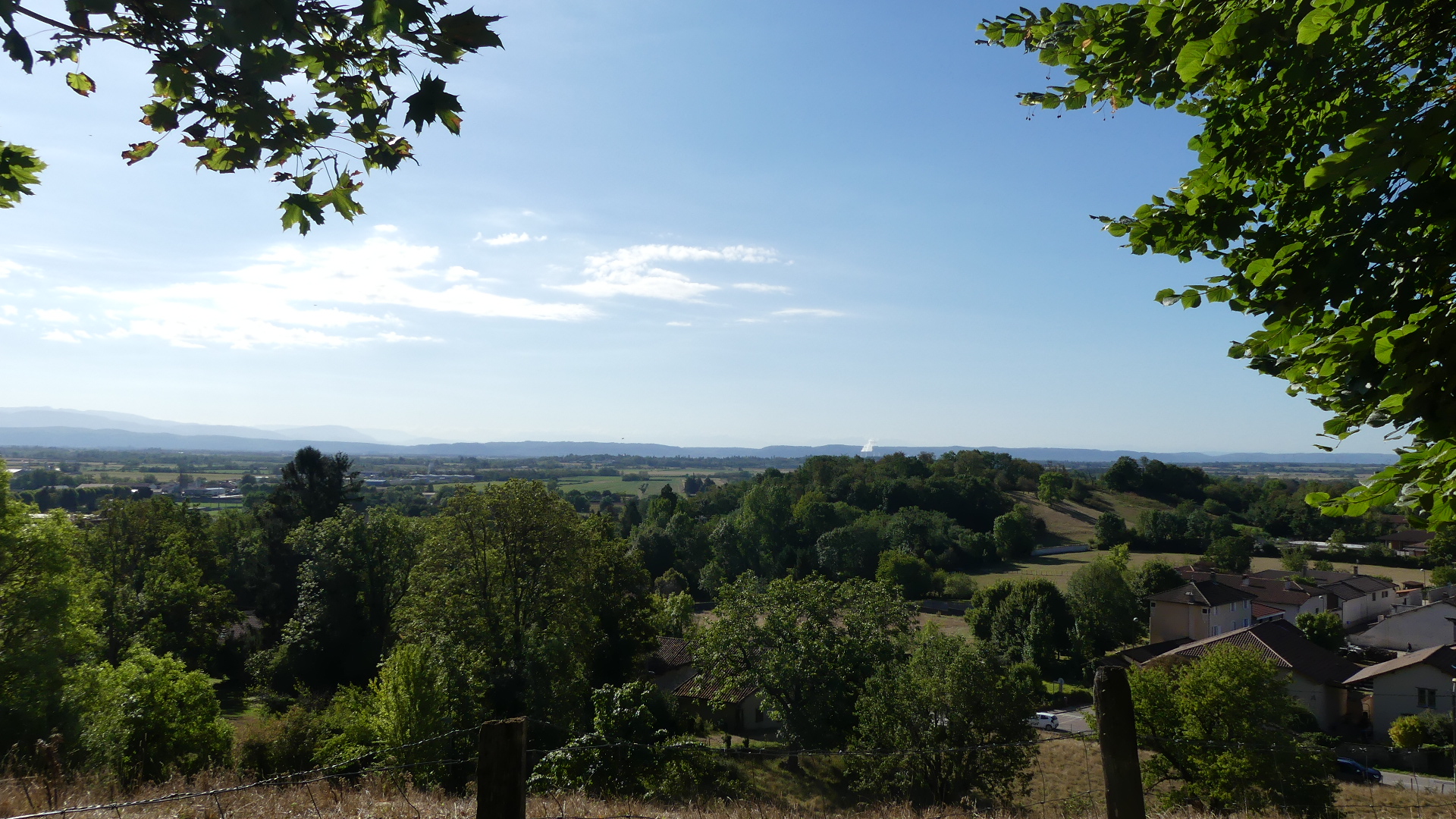

We made our way to the Upper Gate, where we found a small information office, which lead us to the church beside the old City gates (interestingly it had entrances outside the city walls as well as the inside and the village. In 1792 with the commencement of the French Revolution, the Revolution committee presented the town with a lime tree to plant in its main square. That tree survives and is now a National listed monument. There is also a niche with a statue of St George in it on the square and an old olive press. I found the Lower Gate once again and made a reservation at a restaurant. Before going to lunch we visited the local museum and learned that the village had been in decline until a committee of residents was formed to save the village. One of those families was the Thibault family and long serving Mayor of Lyon Edouard Herriot who owned a house in the village and they organised the renaissance of the village.
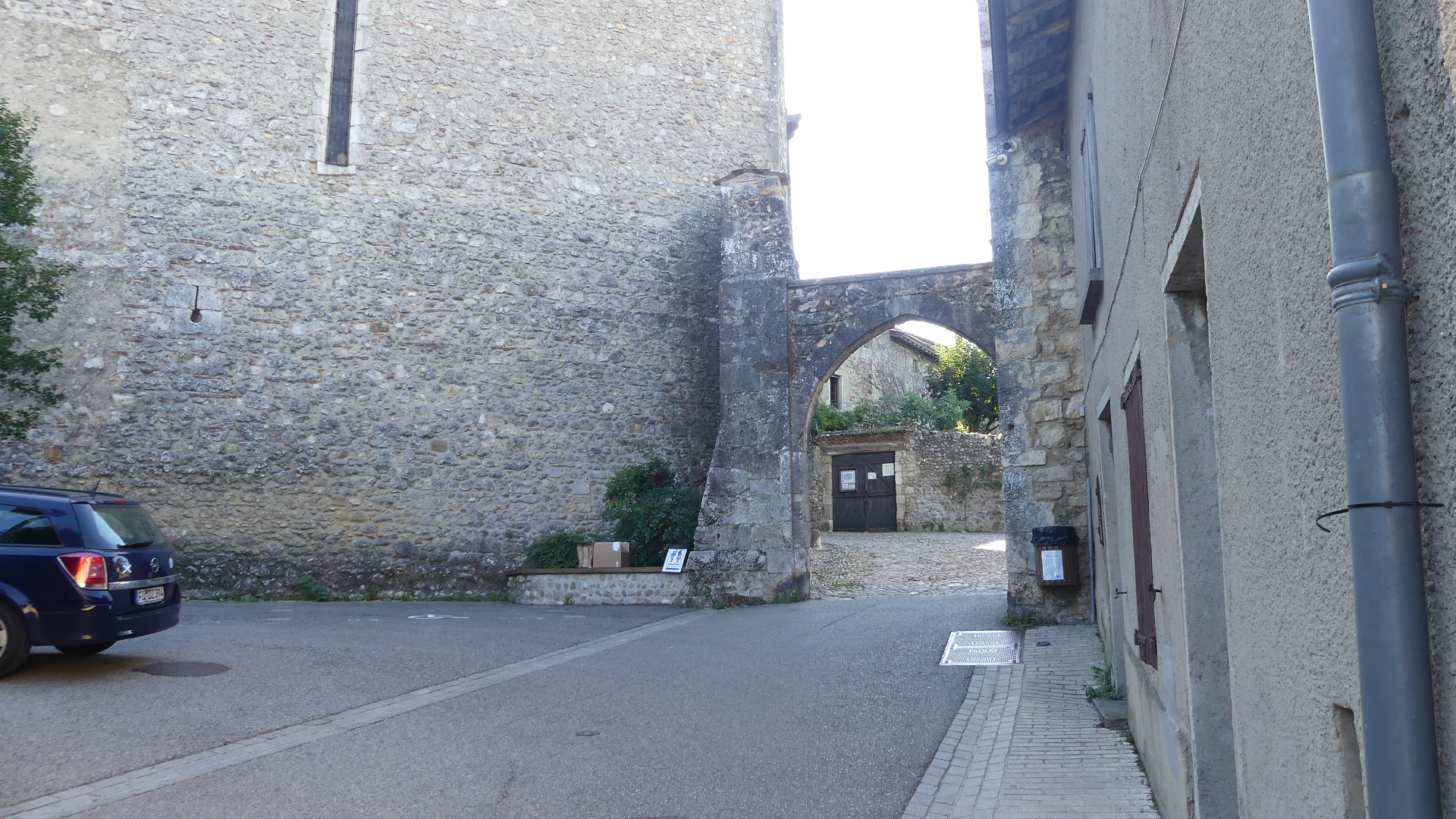


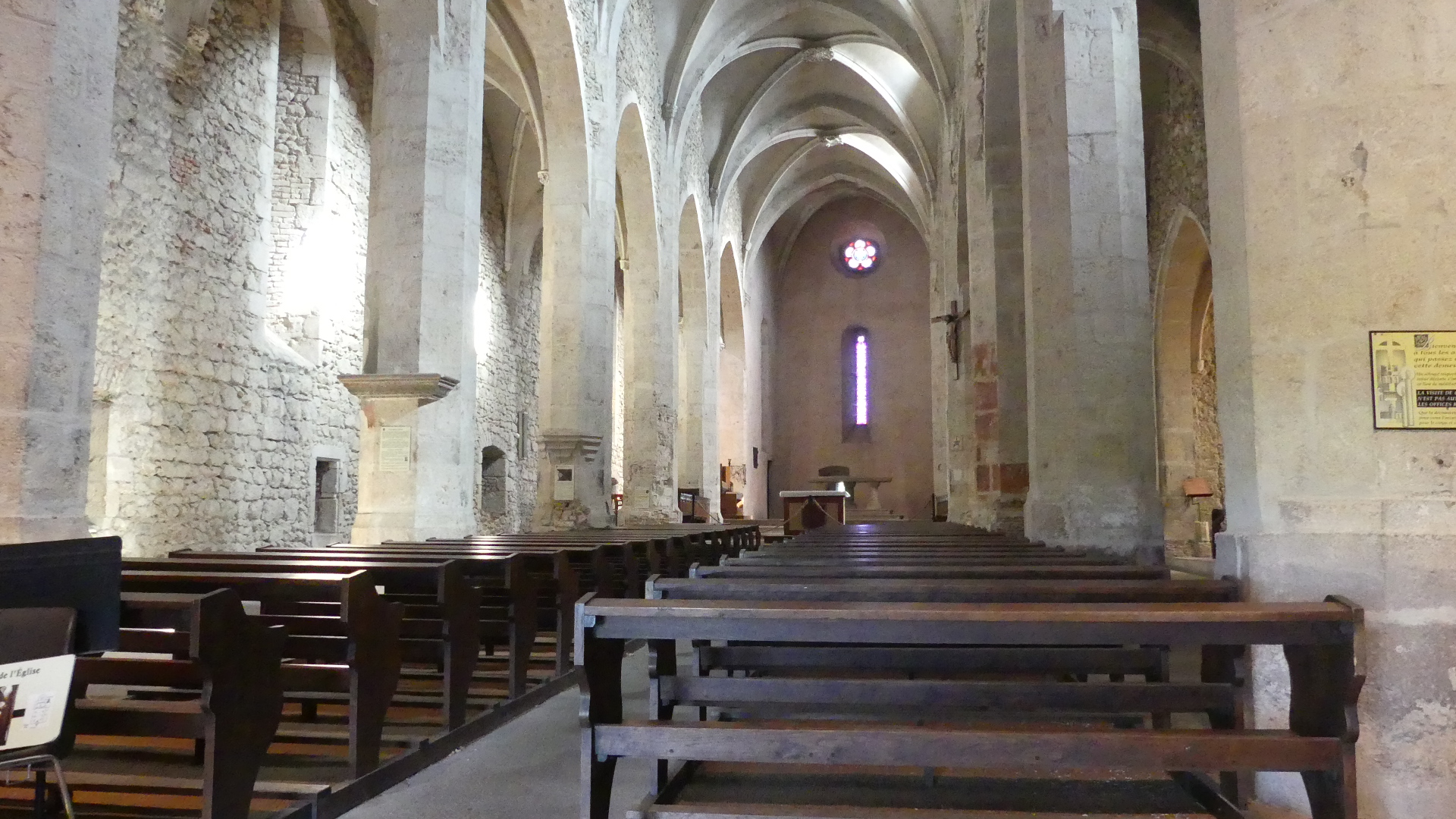







We dined at the restaurant operated by the younger generation of the Thibault family. The lunch was wonderful. Fine dining and period costume worn by the waitress, we were treated as special guests enjoying steak in mushroom sauce for me with potato au gratin and Kerry enjoying a fillet of a local river fish with season vegetables and potato au gratin. We followed this with a dessert which included the house specialty a galaterre which is in the shape of a large pizza base made of bread and brioche coated in sugar and the sugar seared as with creme Brulé. A celebration of our 34 years of marriage. After lunch we visited the museum in the old tower. They have preserved some of the equipment that made the town prosperous but it was time to walk back inot the 21st century and back to our hotel.







Interesting, just loved the demo would never complain about that
LikeLike